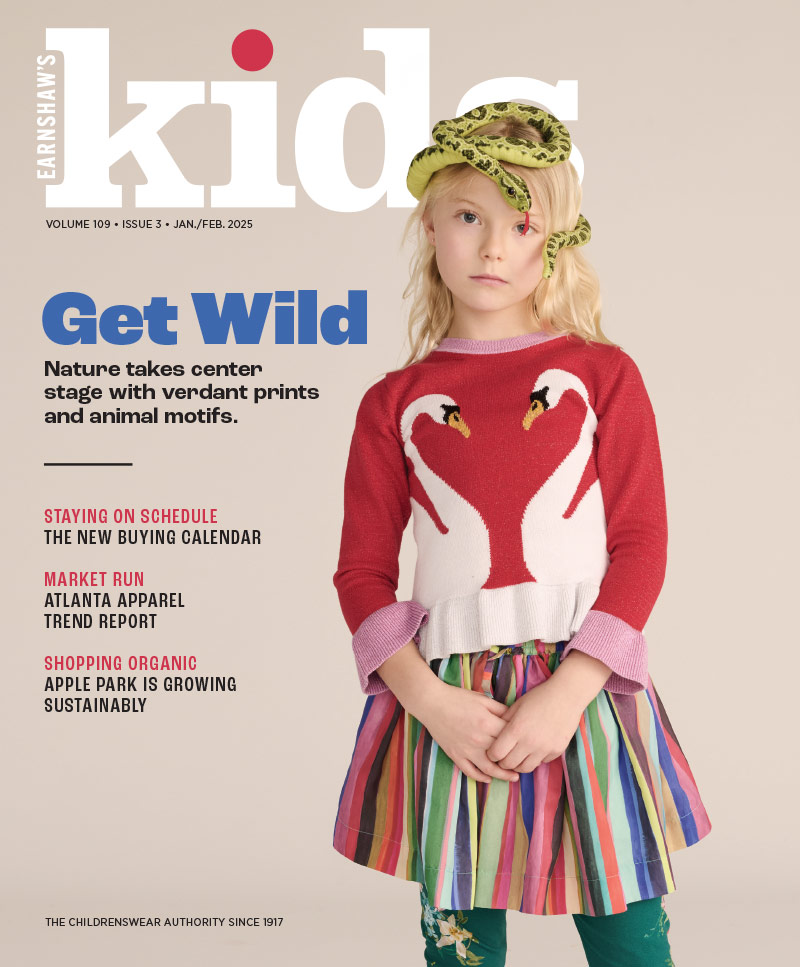Submarine shakes up swimwear with Brazilian flair. When Brazil’s crystal blue water, thick green forests, vibrant flowers, exotic fruits and gift for exuberant festivals serve as the inspiration for your girls’ swimwear line, let’s just say you have plenty of gusto to keep your passion for design rolling. Since the launch of Submarine in 1993, […]
Submarine shakes up swimwear with Brazilian flair.
When Brazil’s crystal blue water, thick green forests, vibrant flowers, exotic fruits and gift for exuberant festivals serve as the inspiration for your girls’ swimwear line, let’s just say you have plenty of gusto to keep your passion for design rolling. Since the launch of Submarine in 1993, founder and designer Deborah Soriano has kept a pulse on what little girls (and their parents) want while staying true to her Brazilian culture with her line of “trendy, not classic” embellished swimwear. Having worked in the clothing manufacturing industry in her native Brazil, Soriano knew she was hitting an untapped market in girls’ swimwear in the United States with her high octave prints and sophisticated cuts. “At the time, the category was really lacking fun, resort-style swimwear for girls. Everything was basic or sporty along the lines of Speedo,” she recalls. “There were no other companies bringing Brazilian flair to swim.”
The initial line was a marriage of dueling aesthetics—trendy accents, but still basic, she describes. Today, Submarine has coined a signature look and is a go-to source for high-quality swimwear with flourishes of ruffles, hand-embroidered details, stone and crystal embellishments, and dazzling prints. Soriano says one of the biggest improvements made to the line was switching to digital printing. “We can print anything we wish and have exclusive designs. And the colors are just so much more vibrant,” she adds.
The designer admits the poor economy forced her to change things up a bit and reorganize collections in order to find a place in shoppers’ budgets. “Our swimwear is more expensive and there are many people who will never look at swimwear as a luxury item, especially for kids. Parents might put more money into a dress,” she explains.
Whereas some designers had to completely restructure (or even abandon) their brands, Soriano’s worldly approach to childrenswear formed a steady foundation. One design does not fit all, especially in girls’ swimwear, and Soriano faced fit challenges head on with a variety of swimsuit cuts and cover-ups. “Whether a style is successful or not depends on the territory,” she explains. Conservative areas of the country want suits with more coverage, such as tankinis. Anything goes in New York, where Submarine experiences its highest number of sales, but Soriano notes buyers share a common request for amped up style and flourish.
Six years ago, Soriano introduced complementary sportswear that includes dresses, tunics and leggings. Today, the line is 80 percent swim and 20 percent sportswear (mostly leggings), but the cabana-ready styles offer retailers more merchandising possibilities and open the window for add-ons. Submarine’s key accounts include high-end boutiques, ho
tels and resorts. “Sportswear has been a great opportunity to reach out to new types of retailers because a lot of children’s boutiques are not interested in swimwear,” Soriano explains. For Spring ’13, buyers will see more animal prints, Asian-inspired florals and a mix of vibrant colors. Ruffles are taking center stage as well. In terms of silhouettes, Soriano says cutout one-pieces, which were strong in previous seasons, are giving way to the more traditional two-pieces. “The string bikini and triangle top will always be a best-seller. It offers what the fashion girls want, but it also fits and adjusts to all types of bodies,” she explains.
—Angela Velasquez



Leave a Comment: